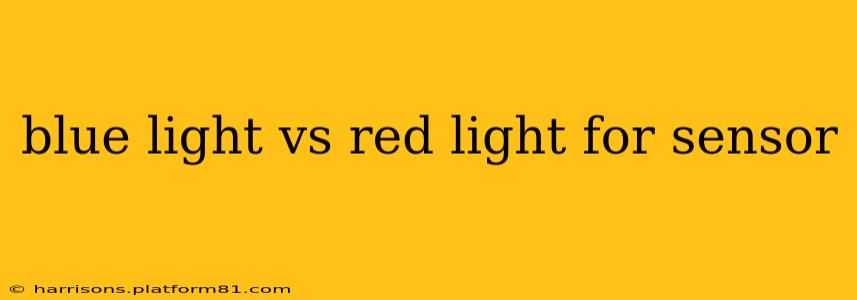The choice between blue light and red light for a sensor depends heavily on the application. Both wavelengths offer unique properties impacting sensor performance, sensitivity, and the overall effectiveness of the system. This article will explore the key differences, advantages, and disadvantages of using blue light versus red light in various sensor technologies.
What are the differences between blue and red light?
The fundamental difference lies in their wavelengths. Blue light has a shorter wavelength (approximately 450-495 nanometers) compared to red light (approximately 620-750 nanometers). This difference in wavelength directly impacts how these lights interact with materials and, consequently, how effectively they are detected by sensors.
Which light is better for distance measurement?
Neither blue nor red light inherently provides a superior distance measurement capability. The optimal choice depends on factors like the sensor type (e.g., time-of-flight, triangulation), the material being measured, and the environmental conditions. Red light often penetrates fog and haze better than blue light due to its longer wavelength, making it preferable in certain atmospheric conditions. However, blue light can offer higher precision in some applications due to its shorter wavelength. Ultimately, the selection needs to be based on a specific application's needs.
Which light is better for detecting specific materials?
The effectiveness of blue or red light in detecting specific materials depends largely on the material's spectral reflectance properties. Some materials absorb blue light more readily than red light and vice versa. For instance, chlorophyll in plants reflects strongly in the green and red regions but absorbs strongly in the blue region. Conversely, certain dyes or pigments might be more strongly reflective in the blue range. Therefore, the best choice depends on the targeted material and its interaction with different wavelengths. Careful spectral analysis of the material is crucial for selecting the optimal light source.
What are the advantages and disadvantages of using blue light?
Advantages of Blue Light:
- Higher spatial resolution: The shorter wavelength potentially allows for higher resolution imaging and measurements.
- Better contrast in certain applications: Blue light can provide better contrast against some backgrounds.
- Excitation of fluorescence: Blue light is often used to excite fluorescence in various materials, enabling specific detection techniques.
Disadvantages of Blue Light:
- More susceptible to scattering: Shorter wavelengths scatter more easily in the atmosphere, reducing range and accuracy in some applications.
- Lower penetration in certain materials: Blue light might be absorbed more readily by certain materials, limiting its effectiveness.
- Potential for higher noise levels: Depending on the sensor and environment, blue light can lead to higher noise levels compared to red light.
What are the advantages and disadvantages of using red light?
Advantages of Red Light:
- Better atmospheric penetration: Longer wavelengths penetrate fog and haze more effectively.
- Reduced scattering: Less susceptible to scattering compared to blue light.
- Lower noise in some sensors: Red light can provide better signal-to-noise ratios in specific applications.
Disadvantages of Red Light:
- Lower spatial resolution: Potentially lower resolution compared to blue light.
- Less effective for some materials: Red light might be less effective in detecting materials that absorb red light strongly.
- Less effective in excitation of certain fluorescence: Red light may not be suitable for fluorescence-based detection in all cases.
Which light is better for color sensors?
Color sensors typically utilize a combination of wavelengths, including red, green, and blue (RGB), to determine the color of an object. While a single wavelength like red or blue wouldn't be sufficient for full-color sensing, the individual contributions of red and blue are integral parts of a complete RGB system.
Ultimately, the choice between blue light and red light for a sensor application is not a simple one and requires careful consideration of the specific requirements, including the target material, environmental conditions, and desired sensor performance characteristics. Thorough testing and analysis are essential to determine the optimal choice.
